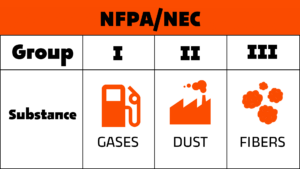Welcome to the Intrinsically Safe Store blog, your go-to resource for all things related to safety and compliance, including cost-benefit analysis, in hazardous environments. We invite you to explore our website and discover our wide range of intrinsically safe products and services.
Understanding Division 1 and Division 2
Before delving into the cost-benefit analysis, it’s crucial to understand the difference between Division 1 and Division 2. These divisions, defined by the National Electrical Code (NEC), categorize hazardous locations based on the presence of flammable gases, vapors, or dust.
- Division 1: This division is for areas where hazardous substances are present continuously, intermittently, or during normal operations.
- Division 2: This division is for areas where hazardous substances are present only under abnormal conditions, such as a system failure or accidental release.

Cost Implications of Upgrading to Division 1
Upgrading from Division 2 to Division 1 involves significant costs. These include the cost of new equipment, installation, and maintenance. For instance, intrinsically safe equipment for Division 1 is typically more expensive due to its higher safety standards.
Benefits of Upgrading to Division 1
Despite the higher costs, upgrading to Division 1 offers several benefits. These include enhanced safety, potential insurance savings, and improved operational efficiency.
- Enhanced Safety: Division 1 equipment is designed to operate safely even in the presence of hazardous substances, reducing the risk of accidents and protecting employees.
- Insurance Savings: Many insurance companies offer lower premiums for businesses that implement higher safety standards, potentially offsetting the cost of upgrading.
- Operational Efficiency: High-quality Division 1 equipment often has better performance and durability, leading to less downtime and more efficient operations.
Case Study: A Real-World Example
Consider the case of a chemical plant that upgraded from Division 2 to Division 1. The initial investment was substantial, but the plant saw a 20% reduction in insurance premiums and a 15% increase in operational efficiency. Over time, these savings more than offset the initial costs.
Is Upgrading Worth It?
Upgrading from Division 2 to Division 1 is a significant decision that should be based on a thorough cost-benefit analysis. While the initial costs can be high, the long-term benefits in terms of safety, insurance savings, and operational efficiency can make the investment worthwhile.
At the Intrinsically Safe Store, we offer a wide range of Division 1 equipment to help you make the transition smoothly and cost-effectively. We invite you to contact us to discuss your specific needs and explore how we can help you upgrade safely and efficiently.


























